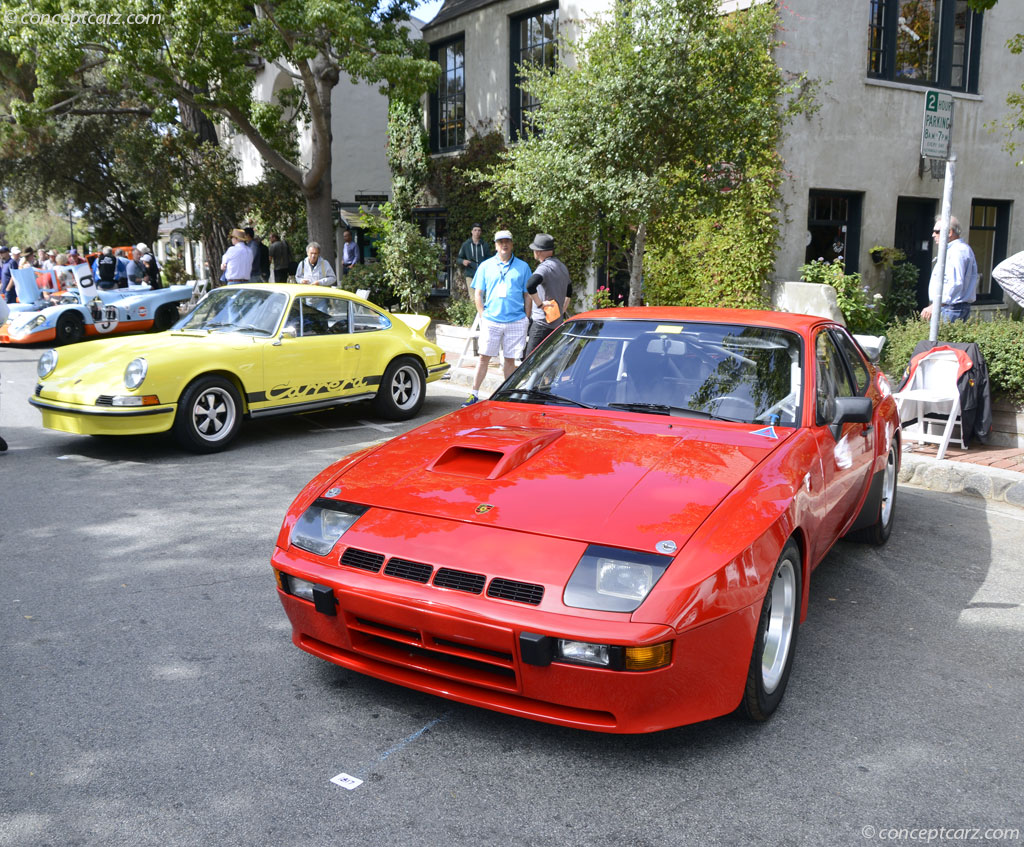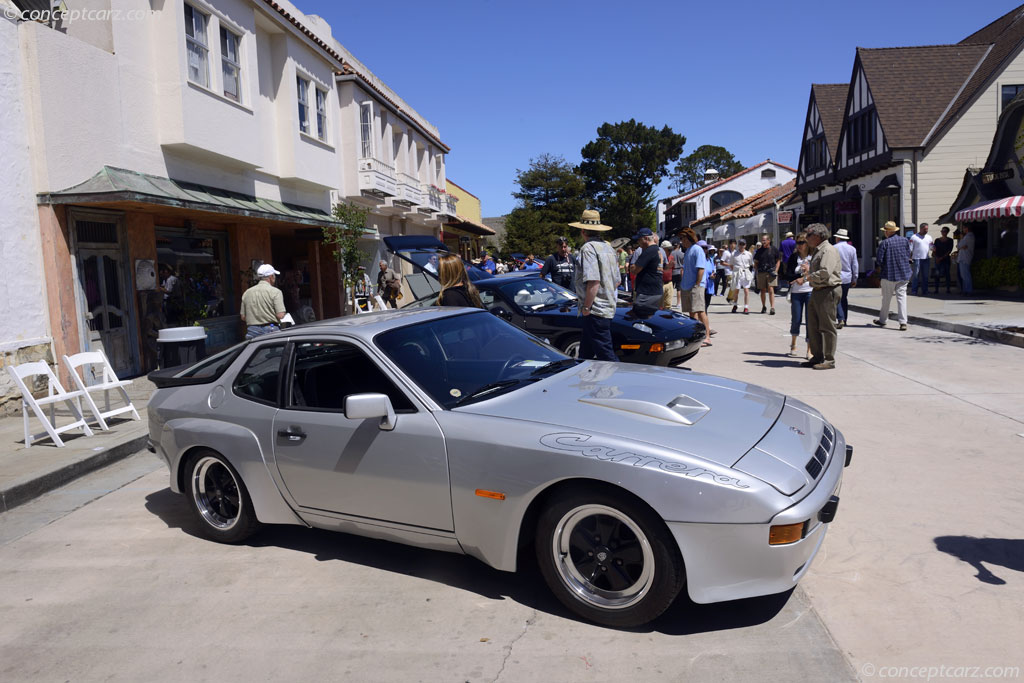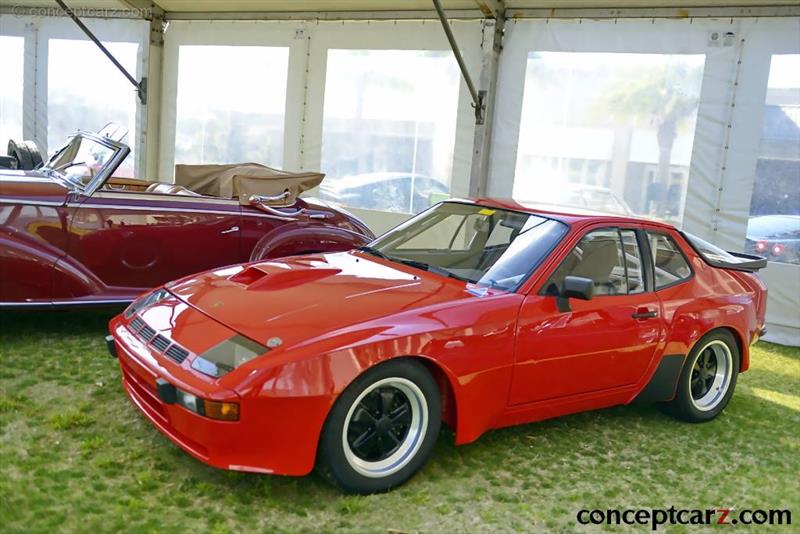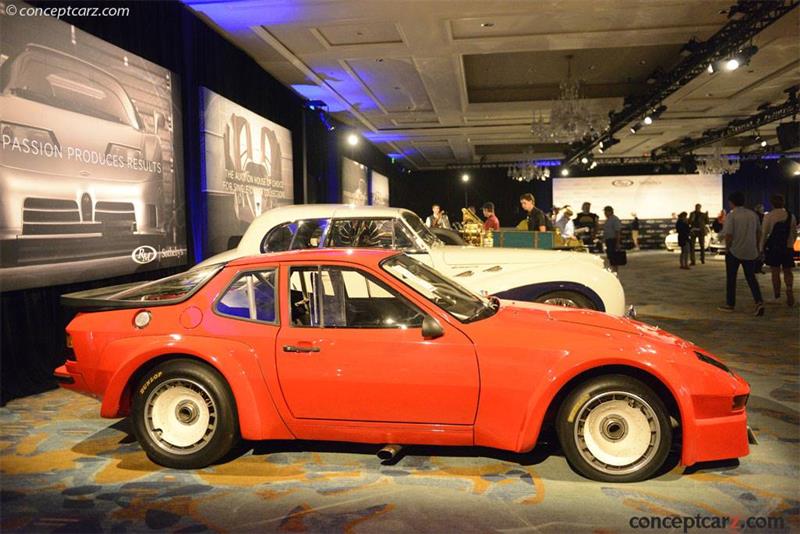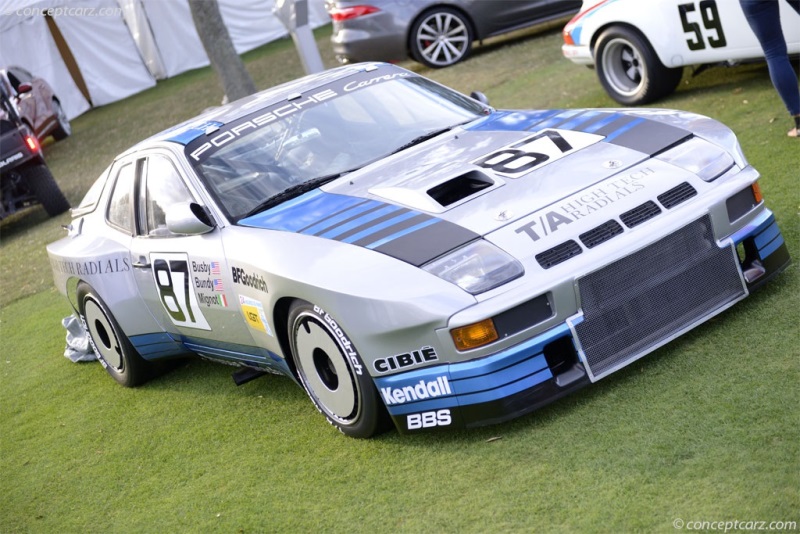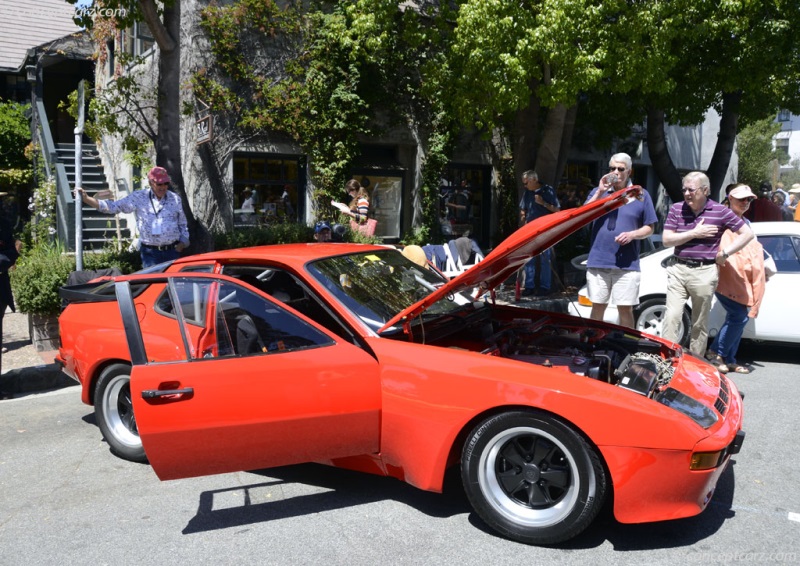Vertriebsgesellschaft (VG) was a sales and marketing company funded by Porsche and Volkswagen. The 924, known by Volkswagen as Project 425, was a joint venture between Volkswagen and Porsche and created through Vertriebsgesellschaft. Both company's intended on using the 924; for Volkswagen, it was intended to be the company's flagship sports car. For Porsche, it was to be an entry-level sports car replacing the 914. At the time, Porsche's design and research department was better suited to developing sports cars, so Porsche was contracted to develop a new sporting vehicle that would accept an existing Volkswagen/Audi inline-four cylinder engine. In keeping with Porsche tradition, they selected a rear-wheel-drive layout and a rear-mounted transaxle. Volkswagen later withdrew support for the project due to the oil crisis of the early 1970s and a change of directors, signaling a change in company focus. Instead, they focused their attention on creating a more practical and less expensive Gold-based Scirocco model instead. Porsche still needed a replacement for the aging 914. They were able to strike a deal with Volkswagen to buy the design back but specified that the car would be built at the ex-NSU factory in Neckarsulm, with Volkswagen being the subcontractor. Volkswagen employees did the production line work under Porsche's supervision, and Porsche would retain ownership of the design. Much of the design work was created by Dutch designer Harm Lagaay. Small improvements would follow the 924 from year-to-year. Production of the 914 was discontinued prior to the introduction of the 924. To fill the gap, Porsche re-introduced the Porsche 912 to the North American market as the 912E. The 912E was a single-year offering, as the 924 made its debut in 1975 at the harbour at La Grande Motte, Camargue in the south of France. Sales of the 924 would last from 1976 through 1988 with just over 150,000 examples being produced, making it one of Porsche's best-selling models. Sales in the U.S. began in July 1976 as a 1977 model with a base price of nearly $9,400. 
GTR Coupe
Chassis #: Jan-84The engine was a Volkswagen EA831 2.0-liter four-cylinder unit sourced from the Audi 100 and the Volkswagen LT van. The transmission was an Audi-sourced four-speed manual from a front-wheel-drive car that was now used as a rear transaxle. The engine received a Bosch K-Jetronic fuel injection system which helped it produce 95 horsepower in North American guise. In mid-1977, after receiving a catalytic converter, horsepower rose to 110 bhp. The four-speed manual transmission was later replaced by a five-speed dog-leg unit. Mid-way through 1977, an Audi three-speed automatic became available. In 1980, the five-speed was changed to a conventional H-pattern setup. 924 models destined for the U.S. market were fitted with emissions equipment. European models, which did not have the emissions equipment, produced higher horsepower at 123 hp. Additionally, European models did not have the same U.S. safety equipment which meant no low-speed impact bumpers, round reflectors, or side-marker lamps. 924 Carrera GTS Clubsport
To build customer interest in the Volkswagen/Audi-powered 924, Porsche management decided to take it racing using the higher-performance derivative called the Carrera GT. FIA Homologation requirements for Group 4 two-liter race cars dictated a minimum of 500 examples built. During the development phase, this number was relaxed to 400. Ultimately, Porsche would produce 406 examples of the 924 Carrera GT.
GTR Coupe
Chassis #: Jan-84Porsche engineers tuned the engine to produce 210 horsepower and lightened the car by 330 pounds. The body was modified to allow a much wider front and rear track with extended front fenders and rivet-on flares on the rear quarters. This allowed seven- and eight-inch wide Fuchs forged alloy wheels and tires to be installed. Porsche took the project a step further with the creation of an 'Evolutionary' model that required 50 street-legal examples, and they were named the Carrera GTS. These cars were intended to capture FIA recognition for the 924 GTP, of which three were constructed to compete in the 1981 24 Hours of Le Mans. When the checkered flag fell at LeMans, the 924 GTP were in 6th, 12th, and 13th place overall. The Porsche 924 Carrera GTS models had plastic-covered rectangular headlamps, additional venting in the nose, and a molded plastic GTS badge on the rear body panel. The engine was tuned to produce 245 horsepower at 6,250 RPM with 1.0 Bar of boost on a compression ratio of 8.0:1. The transmission was a Getrag G31/03 five-speed with a 40-percent limited slip that was cooled with an additional radiator. The overall weight was reduced to 2,300 pounds, with the help of hollowed-out, metal-framed fiberglass door shells fitted with sliding windows that were constructed of plastic. It had a lighter and thinner flush-mounted windshield, a molded clear Plexiglas rear hatch, and a black rubber spoiler. The hood was made of fiberglass with a functional air intake and hold-down latches. The suspension was upgraded to Bilstein coil-overs with cast light-alloy rear semi-trailing arms. The ventilated and cross-drilled disc brakes were sourced from the 930 Turbo, providing exceptional stopping power. All this work and improvement translated into a zero-to-sixty mph time of 6.5 seconds. A full bolt-in, alloy roll cage provided protection for the driver in the event of a crash. The interior also had a special VDO tachometer, a suede-wrapped steering wheel, and two 935-type racing bucket seats with Autoflug race harnesses. Instead of a back seat, there was a 120-liter gas tank and a collapsible emergency spare wheel. For owners who intended on racing, Porsche offered a Halon fire-suppression system along with ignition cutoff switches installed on both the dashboard and front windshield cowling.A total of 50 examples were produced and sold. Each example had a base factory-delivered price of nearly four times that of a standard 924. For buyers seeking even more performance and exclusivity, Porsche offered the Clubsport. Upgrades to the engine included an increased bore, resulting in a displacement size of 2,093cc. With the help of a larger air-to-air intercooler, the engine delivered 275 horsepower at 1.1 Bar. Zero-to-sixty mph was reduced to 5.2 seconds, and top speed rose to 160 mph.
by Daniel Vaughan | Oct 2019
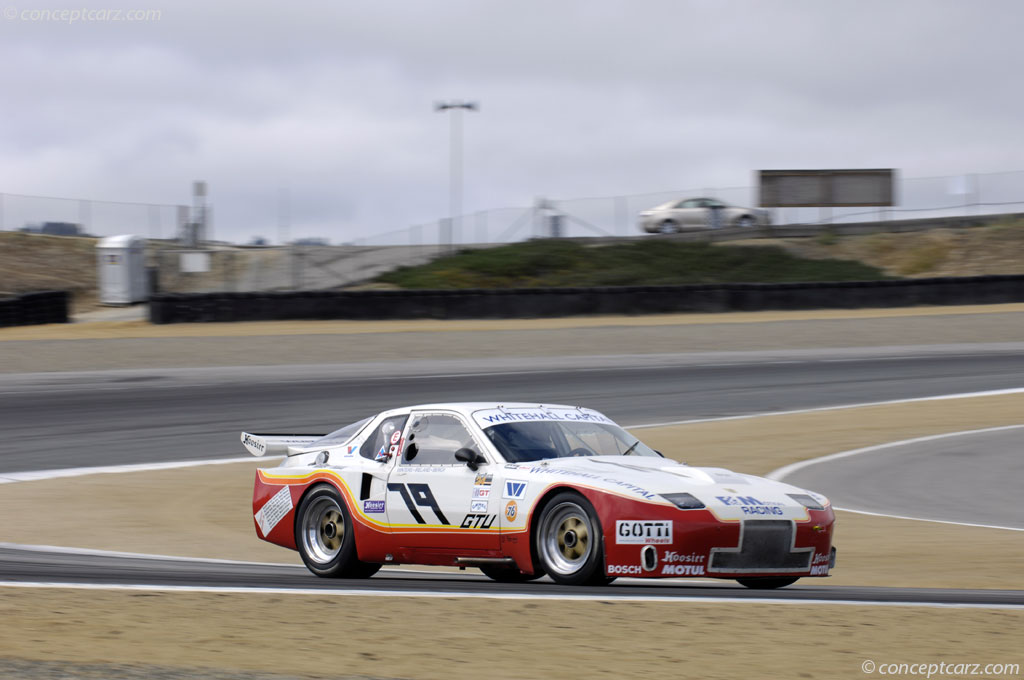
GTR Coupe
Chassis #: Jan-84
To build customer interest in the Volkswagen/Audi-powered 924, Porsche management decided to take it racing using the higher-performance derivative called the Carrera GT. FIA Homologation requirements for Group 4 two-liter race cars dictated a minimum of 500 examples built. During the development phase, this number was relaxed to 400. Ultimately, Porsche would produce 406 examples of the 924 Carrera GT.
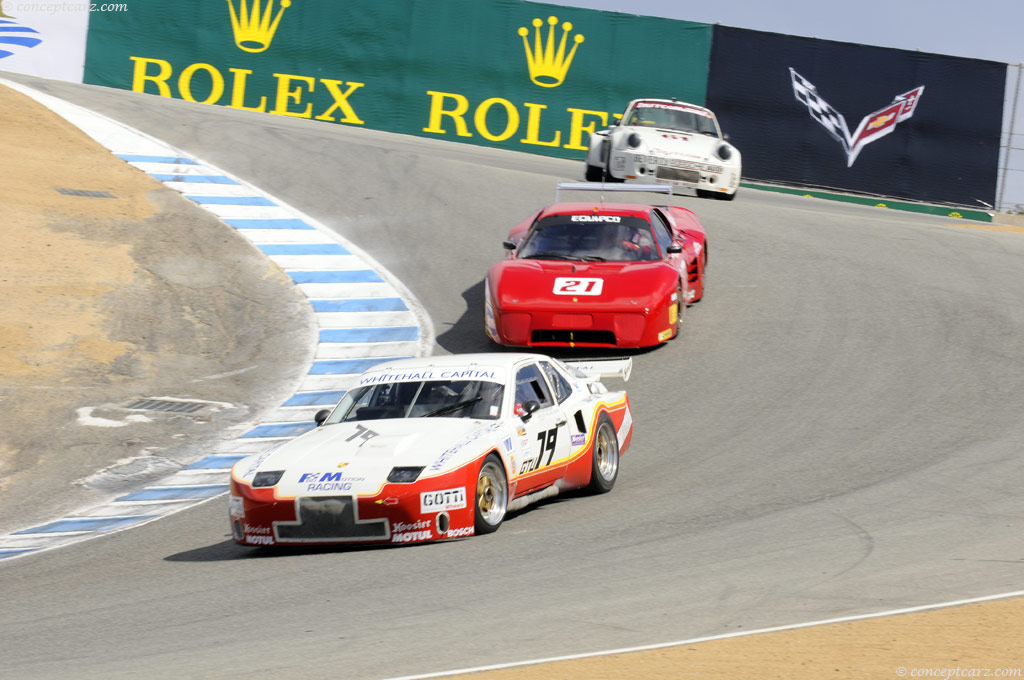
GTR Coupe
Chassis #: Jan-84
by Daniel Vaughan | Oct 2019
Related Reading : Porsche 924 History
The Porsche 924 was produced from 1976 through 1988 and served as a replacement for the 914. The 924 is credited with aiding Porsche in recovering from financial difficulties by creating a revenue stream that helped with development costs in the 911. After a long and illustrious career, the 924 was replaced by the 944. The history of the 924 leads straight to Volkswagen, the company that commissioned....
Continue Reading >>
Continue Reading >>
Similar Automakers
1981 Porsche 924 Vehicle Profiles
Recent Vehicle Additions
Performance and Specification Comparison
Price Comparison
$27,695 - $29,200
$37,900
924 Specification Comparison by Year
Year
Production
Wheelbase
Engine
Prices
Related Automotive News

The Brumos Collection
The Brumos Collection, located at 5159 San Pablo Road South, recently opened its doors to the public, with viewings on Thursdays and Fridays from 10 a.m. to 3p.m (and one Saturday a month). Although they rarely use the word museum, the mission...

Competition at the Amelia Island Concours
Competition has always been a part of the Amelia Island Concours dElegance. The core group of classes includes four Race Car groups (Prewar, 1946-57, 1958-66, 1967-83). Additionally, there are four classes reserved for Sports Cars. For those seeking...

SEMA: Graham Rahal Injects Style, Power And Performance To Custom Acura RDX A-Spec
2019 RDX A-Spec tuned and tweaked by Graham Rahal Performance to 345 horsepower
Updated 2019 Acura NSX in Thermal Orange Pearl also on display alongside new NSX GT3 Evo race car
Acura Team Penske ARX-05 Daytona Prototype and Peter Cunninghams TLX...

Porsche Honors Hurley Haywood On 70Th Birthday
Endurance racing legend born May 4, 1948
Atlanta, Georgia. Porsche congratulates one of its most decorated ambassadors, Hurley Haywood, on a shared anniversary The five-time Rolex 24 Hours of Daytona winner turns 70 today, just a month before...

PORSCHE MOTORSPORTS PRE-EVENT NOTES. 24 HOURS OF LE MANS
The #20 Porsche 919 Hybrid with drivers (left to right) Mark Webber, Timo Bernhard, and Brendon Hartley, at Le Mans tech inspection earlier today in the town of Le Mans.
Dateline. Le Mans, France
Circuit. Circuit de la Sarthe
Track LengthTurns....
